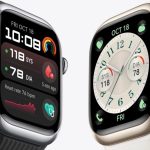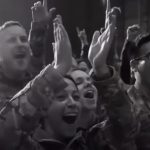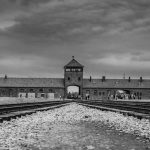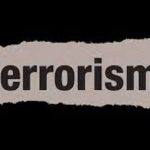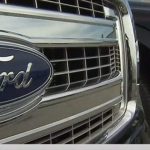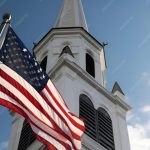The city’s strict but successful “zero-Covid” policy had largely kept the virus out for months.But when the highly transmissible Omicron variant broke through Hong Kong’s defences, authorities were caught with a dangerously under-vaccinated population and few plans in place to deal with a mass outbreak.The extremely contagious Omicron variant was first discovered in Hong Kong’s local community in late December — far later than much of the rest of the world.Authorities reacted quickly — banning flights, forbidding gatherings of more than two, and launching a mass hamster cull after coronavirus-positive pet store rodents were discovered.But these measures did little to curb Omicron’s spread.As of Friday, local time, Hong Kong had recorded more than 20,200 infections in less than two months — outstripping its cumulative two-year total of about 12,000.City leader Carrie Lam admitted this week the fifth wave had “dealt a heavy blow”, and by Friday announced a postponement to the planned March selection of Hong Kong’s next chief executive.The government is now scrambling to find a place to build a makeshift mega-hospital while seeking the mainland’s help with testing capacity and the speedy construction of quarantine facilities.“I don’t think (the government) was ever really prepared for an outbreak of this scale,” Karen Grepin from the University of Hong Kong’s School of Public Health said.“Our strategy to fight Covid really never evolved despite the fact that the virus … has become much more transmissible.”Hong Kong’s policy under previous outbreaks was to hospitalise all Covid-19 patients — even those with mild symptoms.Bleak scenes this week showed overrun hospital staff placing elderly patients on gurneys outdoors under dropping temperatures.Worried patients also waited in long queues outside hospitals — potentially exposing them to the public.The government’s recent pivot to telling people with mild symptoms to remain home, however, has not stemmed the flow, with 12,000 waiting for beds Wednesday.Hong Kong has some of the lowest vaccination rates in the developed world, and critics say those in charge have done little to boost those numbers.Especially vulnerable are the elderly — only 43 per cent of those aged 70-79 and 27 per cent of the city’s above-80s have received two jabs.“Our speed to get booster shots failed the race with Omicron,” Kwok Kin-on of Chinese University’s public health school told AFP.“So our community immunity had dropped to a low level, while our kids and elderly were unvaccinated when the new wave hit.” All the government can do now is “buy time for children and the elderly to get vaccinated”, he said.On Friday, city leader Lam said the government was “making plans” to test all 7.5 million residents.She also insisted a China-style lockdown is not currently in the cards.Lam’s announcement came just two days after Chinese leader Xi Jinping urged Hong Kong to deploy “all necessary measures” — effectively ruling out the prospect of discarding China’s “zero-Covid” strategy.“In Hong Kong’s political reality, we need to follow ‘One Country’ policy. I have no further comment,” Pierre Chan, Hong Kong’s former medical sector legislator, said.Authorities have begun exploring using hotels, which are sitting empty, as quarantine facilities.A new plan was also launched for taxis to take Covid-positive patients to hospitals — raising eyebrows over the health risks for elderly drivers.“Predominantly, it’s not a public health decision anymore,” Grepin of the University of Hong Kong said. “It’s also a political decision.”CANADIAN POLICE CLEAR TRUCKER PROTESTERSPolice in Canada have moved to dislodge the final truckers and protesters from downtown Ottawa, bringing an end to three weeks of demonstrations over Covid-19 health rules.Ottawa police, who pledged the operation would push ahead “until residents and citizens have their city back,” worked to clear the capital’s streets, using pepper spray and stun grenades, The Guardian reported.Deployed by the hundreds, police said they made more than 100 arrests and towed about 20 vehicles. “We told you to leave. We gave you time to leave. We were slow and methodical, yet you were assaultive and aggressive with officers and the horses,” police said in a statement to the truckers posted on Twitter.Some truckers, who had led the protests that kicked off three weeks ago and choked Ottawa’s streets with big rigs and demonstrators by the hundreds, chose to leave on their own, removing their 18-wheelers from the streets surrounding parliament.Authorities continued to warn demonstrators to go.“You must leave. You must cease further unlawful activity and immediately remove your vehicle and/or property from all unlawful protest sites,” Ottawa police tweeted repeatedly, warning of possible arrests.Throughout the day, heavily armed officers — including on horseback — lined up against protesters who locked arms, advancing slowly and methodically to push back the spirited crowd.An AFP journalist saw several demonstrators led away in handcuffs as police and tow trucks moved in, although most simply surrendered.A few demonstrators were wrestled to the ground, and at least one who refused to exit his truck had his windows smashed and was dragged out by police.The so-called “Freedom Convoy”, which inspired copycat protests in other countries, began with truckers demonstrating against mandatory Covid-19 vaccines to cross the US border. Its demands grew to include an end to all pandemic rules and, for many, a wider anti-Establishment agenda.At its peak, the movement also included blockades of US-Canada border crossings, including a key trade route across a bridge between Ontario and Detroit, Michigan — all of which have been lifted after costing the economy billions of dollars, according to the government.Most of the protest’s leaders have been arrested. Far-right activist Pat King was taken into custody early Friday afternoon as he left town, live-streaming his own apprehension on Facebook.Two other leaders, Tamara Lich and Chris Barber, were arrested Thursday evening. Lich, 49, was heard telling truckers as she was being led away by police to “hold the line.”Criticised for failing to act decisively to end the protests, Prime Minister Justin Trudeau this week invoked the Emergencies Act, which gives the government sweeping powers to deal with a major crisis.It’s only the second time such powers have been invoked in peacetime.Mr Trudeau has said the act was not being used to call in the military against the protesters and denied restricting freedom of expression.The objective was simply to “deal with the current threat and to get the situation fully under control,” he said. “Illegal blockades and occupations are not peaceful protests.” Police this week also arrested dozens of protesters at border crossings, including four people charged with conspiracy to murder police officers at a checkpoint between Coutts, Alberta and Sweet Grass, Montana.They seized dozens of vehicles as well as a cache of weapons that included rifles, handguns, body armour and ammunition.Authorities also froze the bank accounts of protesters and chocked off crowd-funding and cryptocurrency transactions supporting the truckers.
Powered by WPeMatico

